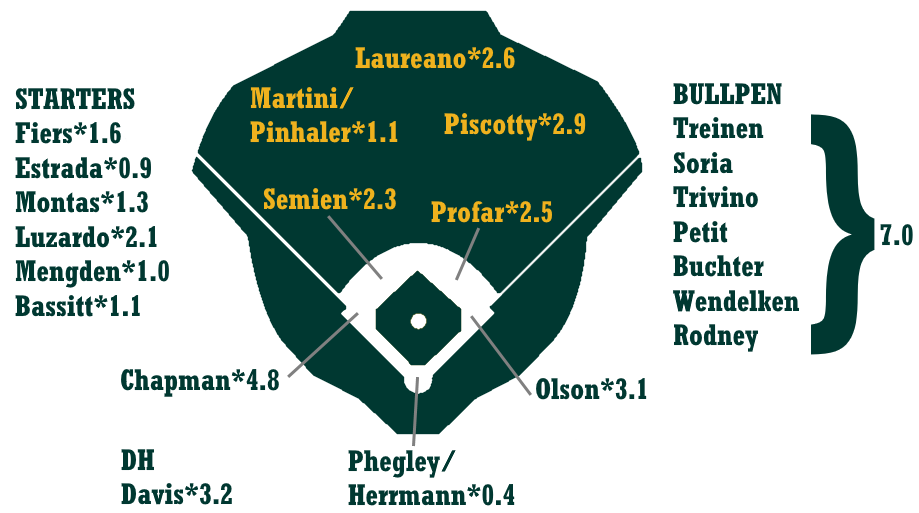Below is an analysis of the prospects in the farm system of the Toronto Blue Jays. Scouting reports are compiled with information provided by industry sources as well as from our own (both Eric Longenhagen’s and Kiley McDaniel’s) observations. For more information on the 20-80 scouting scale by which all of our prospect content is governed you can click here. For further explanation of the merits and drawbacks of Future Value, read this.
All of the numbered prospects here also appear on The Board, a new feature at the site that offers sortable scouting information for every organization. That can be found here.
Other Prospects of Note
Grouped by type and listed in order of preference within each category.
Corner Bats
Ryan Noda, 1B
Chad Spanberger, 1B
Mc Gregory Contreras, RF
Josh Palacios, RF
Demi Orimoloye, RF
Noda is extremely selective and has walked in over 20% of his plate appearances as a pro, but he’s a stiff, below-average athlete and needs to keep performing like this for the industry to view him as more than a statistical curiosity. Spanberger has 70 raw power and went nuts at hitter-friendly Asheville against pitching worse than what he saw in college before he was traded to Toronto. He cooled in the FSL afterward. Contreras has plus bat speed and power projection, a typical, high-risk right field profile, though he’s not a good defender yet. Palacios is also a corner guy with feel to hit but needs to find a way to tap into more power. Orimoloye was born in Nigeria and moved to Canada as a toddler. He was acquired from Milwaukee for Curtis Granderson just before the waiver deadline. Demi has plus raw but lacks feel to hit.
Polished Depth Arms
Thomas Pannone, LHP
Julian Merryweather, RHP
Josh Winckowski, RHP
Sean Wymer, RHP
Justin Maese, RHP
Zach Logue, LHP
Zach Jackson, RHP
Jackson McClelland, RHP
Jon Harris, RHP
Pannone has excellent changeup command but his limited velo and curveball likely cap his ceiling in the sixth starter area. Then with Cleveland, Merryweather was striking out a batter per inning at Double- and Triple-A in 2017 before he blew out late in the year and missed all of 2018. He’ll likely be back this year and could be a four-pitch reliever who relies heavily on velo. Winckowski may end up in a middle relief role. He sits 90-94 and has an above-average slider. Wymer was the club’s 2018 fourth rounder out of TCU. His stuff plays better out of the bullpen, where he’s 92-93 with command of a 55 curveball. Maese was a popup high schooler in tough-to-scout El Paso whose stuff has plateaued in the 45/50 area. Logue has 60 control of 45 stuff. Jackson has one of the more bizarre deliveries in baseball, and both he and McLelland have the stuff to be 40 FV relievers, but both are also very wild. Harris’ spin rates are strong but his fastball velocity has backed up since college.
Bench Types
Logan Warmoth, SS
Addison Barger, 3B
Forrest Wall, LF
Riley Adams, C
Max Pentecost, C/1B
After Warmoth’s pre-draft reports were divisive in 2017, when he was Toronto’s first rounder, they were consistently down throughout 2018. He may end up with an average bat and fringe power but he’s not likely to stay at short based on pro looks. He’s clearly been passed by several shortstops in the system. Barger has a plus-plus arm and played all over the infield last year but may only end up with 40 hit and power. We were too high on Wall last year. He can still run but maybe not well enough to play center field, which means he’s a contact-only left fielder. Adams is a physical beast with a plus arm and big raw power, but he swings and misses a lot due to lever length and his ceiling is that of a toolsy backup. Pentecost, like Wall, has never been quite the same since surgery and he’s a contact-only bat at a position that demands more.
System Overview
It’s hard to talk about this system and franchise without spending a good bit of time on Vladimir Guerrero, Jr. The previous regime not only landed a generational talent but one with ties to Canada, especially notable because of MLB’s clear marketing shortcomings. Vlad Jr. developed better than anyone expected and is one of the best prospects of recent memory.
The organization has hoarded players we consider 45s and 50s who couldn’t crack quality rosters in an attempt to prime the big league club with role players for the arrival of young stars like Vlad, Bichette, and Jansen. Not all of them will work out, but the list of players like this that the Blue Jays have acquired (Brandon Drury, Teoscar Hernandez, Trent Thornton, Randall Grichuk, David Paulino, Billy McKinney) is so long that enough of them should, enabling Toronto to build a competitive club around this wave of young talent.
This is almost the inverse of how most competitive sports teams are built, as franchise players are often the first ones in place and pieces are fit in around them. There still needs to be more pitching, though. Marcus Stroman and Aaron Sanchez both had down years and this farm system isn’t exactly packed with arms. They can improve in free agency but competitive staffs almost always need a lot of depth to fight through injuries, so we still expect Toronto to be in asset collection mode for another year or two before they feel comfortable pushing their chips in.


